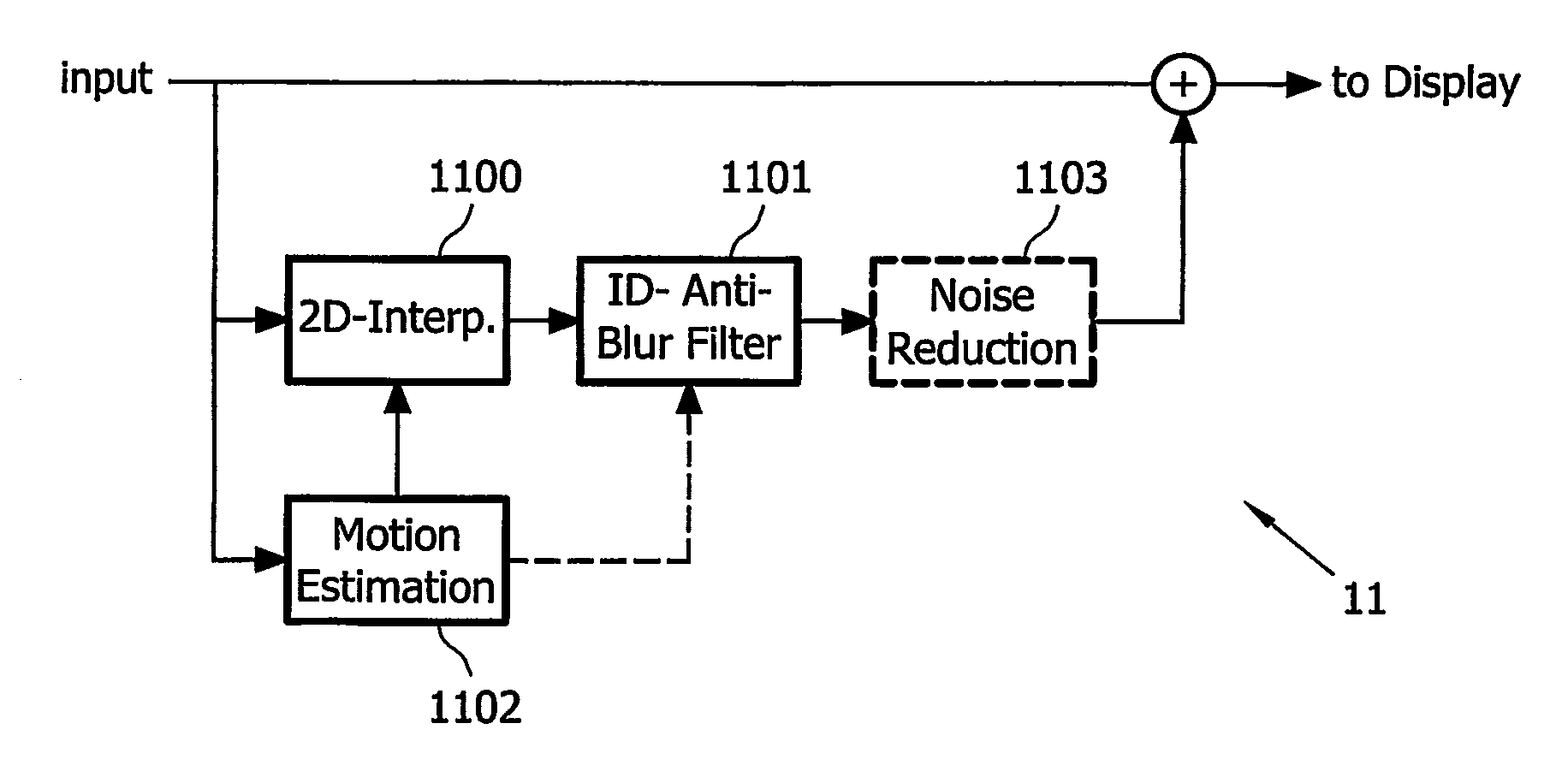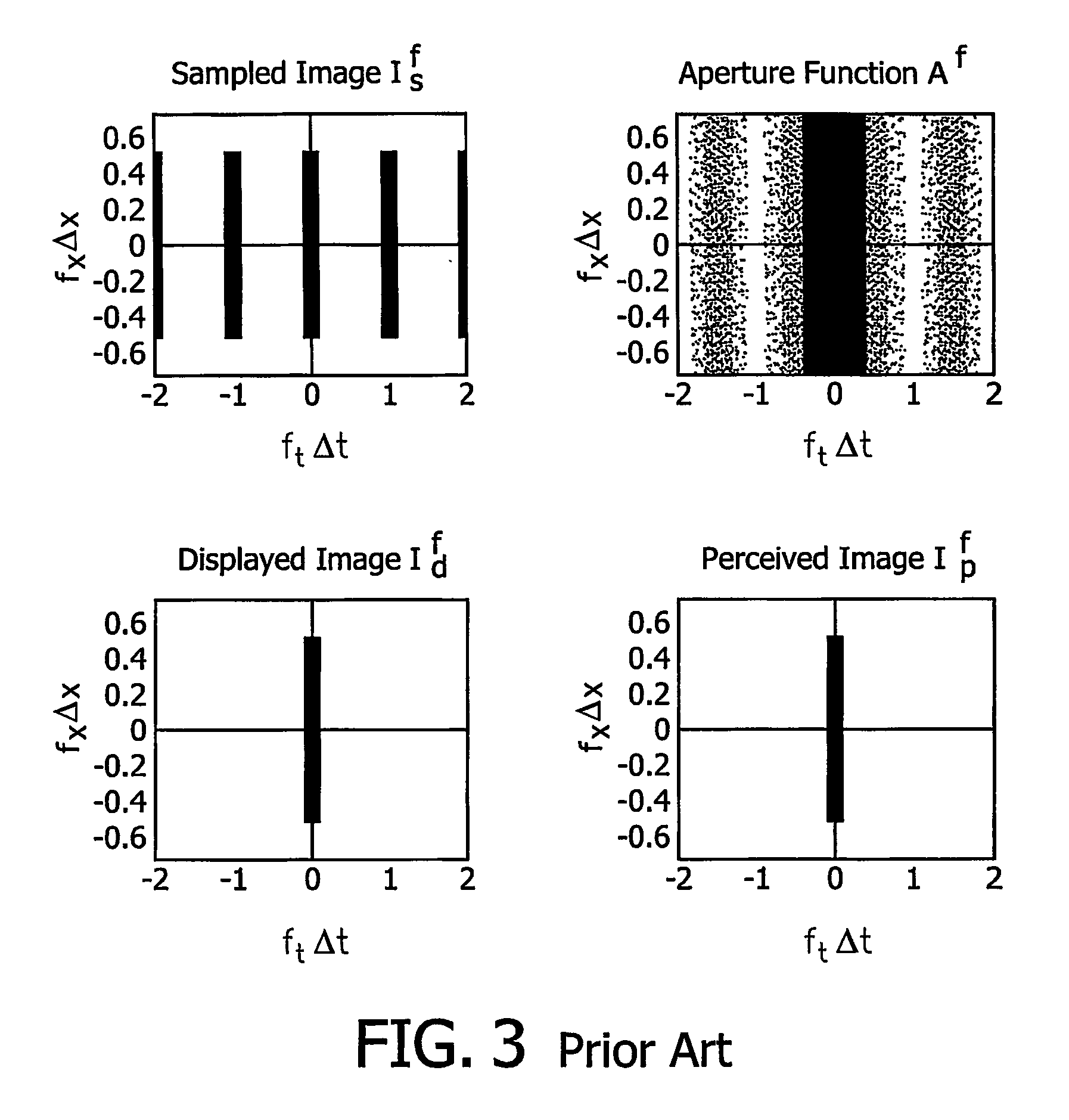Motion-compensated inverse filtering with band-pass filters for motion blur reduction
a motion blur reduction and band-pass filter technology, applied in the field of motion blur reduction, can solve the problems of increasing the market share of crt, lcd performance much worse, and the performance of active matrix liquid crystal displays (am-lcds) is much worse, so as to reduce the motion blur of images
- Summary
- Abstract
- Description
- Claims
- Application Information
AI Technical Summary
Benefits of technology
Problems solved by technology
Method used
Image
Examples
Embodiment Construction
[0086] The present invention sets out from the observation that the display+eye filter Hf({right arrow over (f)}x) of Eq. (11), as illustrated in FIG. 8, at high speeds has a considerable attenuation at already very low spatial frequencies. Furthermore, it is recognized that the human visual system is more sensitive to the lower spatial frequencies, and that the higher frequencies generally have a lower signal-to-noise ratio. Furthermore, the present invention recognized that in common video material, moving objects will not contain the highest frequencies due to the limitations of the camera (camera blur). For this reason, viewers are used to losing some detail at high speed, although not to the extent (up to lower spatial frequencies) that is caused by LCD panels.
[0087] According to the present invention, in case of high speeds, it is thus proposed to give priority to the compensation of the lowest affected frequencies, and to leave the highest frequencies basically unchanged. Th...
PUM
 Login to View More
Login to View More Abstract
Description
Claims
Application Information
 Login to View More
Login to View More - R&D
- Intellectual Property
- Life Sciences
- Materials
- Tech Scout
- Unparalleled Data Quality
- Higher Quality Content
- 60% Fewer Hallucinations
Browse by: Latest US Patents, China's latest patents, Technical Efficacy Thesaurus, Application Domain, Technology Topic, Popular Technical Reports.
© 2025 PatSnap. All rights reserved.Legal|Privacy policy|Modern Slavery Act Transparency Statement|Sitemap|About US| Contact US: help@patsnap.com



